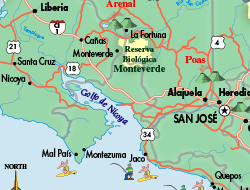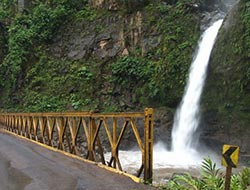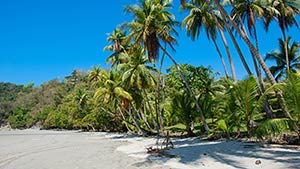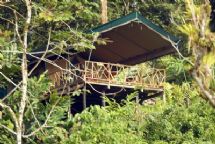Costa Rica's biggest amphibian: The Giant Toad
A Cane Toad in tropical forest of La Selva Protected Zone
Costa Rica is not shy on its inhabitants of frogs, toads, and amphibians, but none are so impressive as the giant toad. Also known as the cane toad, it is easily distinguished from its froggy friends by its sheer size. Weighing up to three and a half pounds, the female toads are often larger than the males. They can also reach up to nine inches in length. Not only the largest in Costa Rica, but the cane toad is the largest toad in the world.
Beyond the distinctive size, the toad has a head with bony ridges and skin covered in warts. Their coloring tends to range from brown to green on top, with a mixture of beige colors on its belly. Particularly the bony ridges allow for farther distinction when finding the giant toad.
Food
The giant toad has an impressive appetite to match its size. The larger of the species are known to eat mice, lizards, and other frogs. Most common food sources include a variety of insects, spiders, worms, ants, wasps, millipedes, slugs, etc. They will also eat something whether it is dead or alive. Because the cane toad eats so much of so much, they play a vital role in the balance of Costa Rica wildlife. Also because of their eating habits, it’s thought that the toads were used as a form of pest control in the banana plantations of Limon Province, Costa Rica.
Home
The cane toad can be found in many places across the world today, however, they are native to South and Central America. Many of the giant toads have decided to call the lush Costa Rica National Parks home, including Corcovado National Park and La Selva Protected Zone. Rain or shine, the Costa Rica weather is perfect for the giant to enjoy. Don’t let the rain scare you away from walking through pristine, untouched land full of discovery and beauty. The cane toad is often found at the base of mountains but can also be at elevations above sea level up to a mile.
Defense
Poisonous glands are a helpful defense mechanism the cane toad has at the base of its neck. The toad is so poisonous, it can kill a crocodile. Because of this, many predators only attempt to eat the toads when they are quite young. However, even in egg form, the toads are coated in a toxin that could be upsetting to many who digest them.
The poison they release is called bufotoxin or bufotenine and can be found in the human world in many places. In Peru, it is actually used in food. In China, it is used in cardiac surgery and for prostate cancer, it is being tested. The toxin helps create poisonous arrows in Central and South America. In Japan, it is considered an aphrodisiac and helpful in hair restoration. The toxin can also be taken from different species of plants and mushrooms for easier retrieval.
Reproduction
Beyond its fascinating size, the cane toad produces an enormous amount of eggs, ranging from eight thousand to twenty-five thousand at a time. The eggs are hatched into the water in strands up to sixty-six feet in length.
Survival
The cane toad has been around for a long time and continues to thrive no matter human involvement or climate change. Between its lack of fickle habitat and food choice, along with its poisonous secretions, the cane toad not only survives, but thrives. Some areas of the world have begun to consider the giant toad an invasive pest as it harms many domestic and wild animals to ensure its own survival. The Costa Rica National Parks allow the road to thrive in a natural habitat without endangering species around it.
7 Days / 6 Nights
Starting at $978 per person
10 Days / 9 Nights
Starting at $1,440 per person











.jpg)

.jpg)




